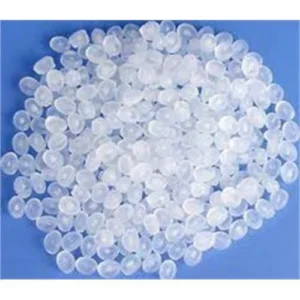Plastics are used to describe a group of materials that can be produced from natural resources or synthetically created resources. The raw materials used to produce plastics today are mostly found in the natural world, and include cellulose, coal, natural gas, salt, and crude oil. Going forward, plastics will increasingly be made from waste, renewable materials or CO2.
Plastics are polymers, which means they are made by linking chains of the molecules (called monomers) together to create a large molecule (a polymer). An example of this is polystyrene. These links make polymers strong and durable. That’s why poly- appears in common names for plastic, like polyethylene. Copolymers occur when you link together different monomers, for example, to make Nylon™ (polyamide). There are many kinds of polymers available, and each one has different qualities, meaning that they can be used in lots of ways.
Plastics are used to describe a group of materials that can be produced from natural resources or synthetically created resources. The raw materials used to produce plastics today are mostly found in the natural world, and include cellulose, coal, natural gas, salt, and crude oil. Going forward, plastics will increasingly be made from waste, renewable materials or CO2.
Plastics are polymers, which means they are made by linking chains of the molecules (called monomers) together to create a large molecule (a polymer). An example of this is polystyrene. These links make polymers strong and durable. That’s why poly- appears in common names for plastic, like polyethylene. Copolymers occur when you link together different monomers, for example, to make Nylon™ (polyamide). There are many kinds of polymers available, and each one has different qualities, meaning that they can be used in lots of ways.
Plastics are used to describe a group of materials that can be produced from natural resources or synthetically created resources. The raw materials used to produce plastics today are mostly found in the natural world, and include cellulose, coal, natural gas, salt, and crude oil. Going forward, plastics will increasingly be made from waste, renewable materials or CO2.
Plastics are polymers, which means they are made by linking chains of the molecules (called monomers) together to create a large molecule (a polymer). An example of this is polystyrene. These links make polymers strong and durable. That’s why poly- appears in common names for plastic, like polyethylene. Copolymers occur when you link together different monomers, for example, to make Nylon™ (polyamide). There are many kinds of polymers available, and each one has different qualities, meaning that they can be used in lots of ways.
Plastics are used to describe a group of materials that can be produced from natural resources or synthetically created resources. The raw materials used to produce plastics today are mostly found in the natural world, and include cellulose, coal, natural gas, salt, and crude oil. Going forward, plastics will increasingly be made from waste, renewable materials or CO2.
Plastics are polymers, which means they are made by linking chains of the molecules (called monomers) together to create a large molecule (a polymer). An example of this is polystyrene. These links make polymers strong and durable. That’s why poly- appears in common names for plastic, like polyethylene. Copolymers occur when you link together different monomers, for example, to make Nylon™ (polyamide). There are many kinds of polymers available, and each one has different qualities, meaning that they can be used in lots of ways.

